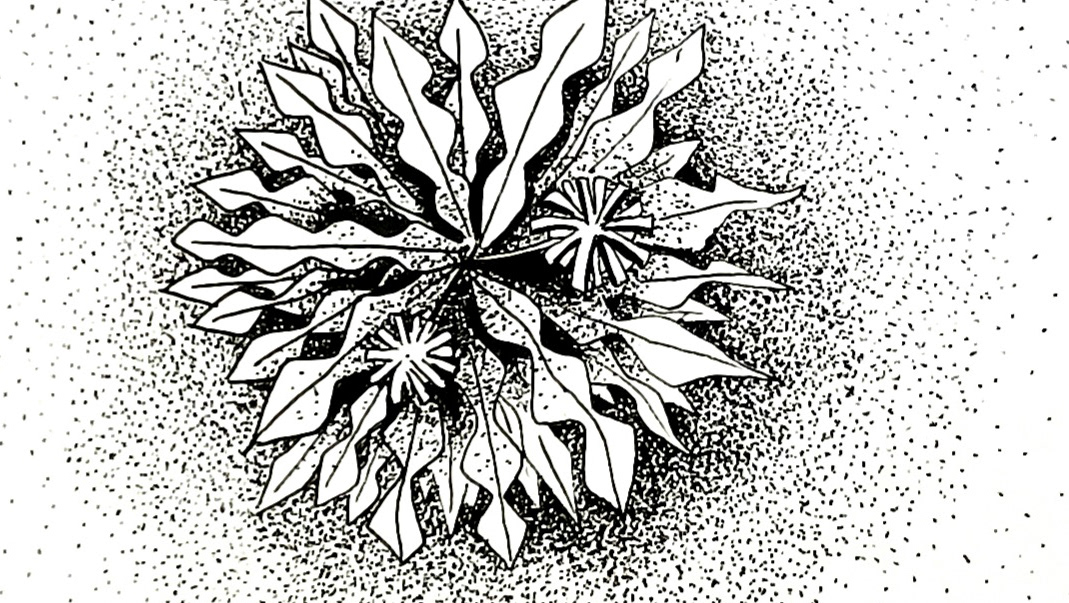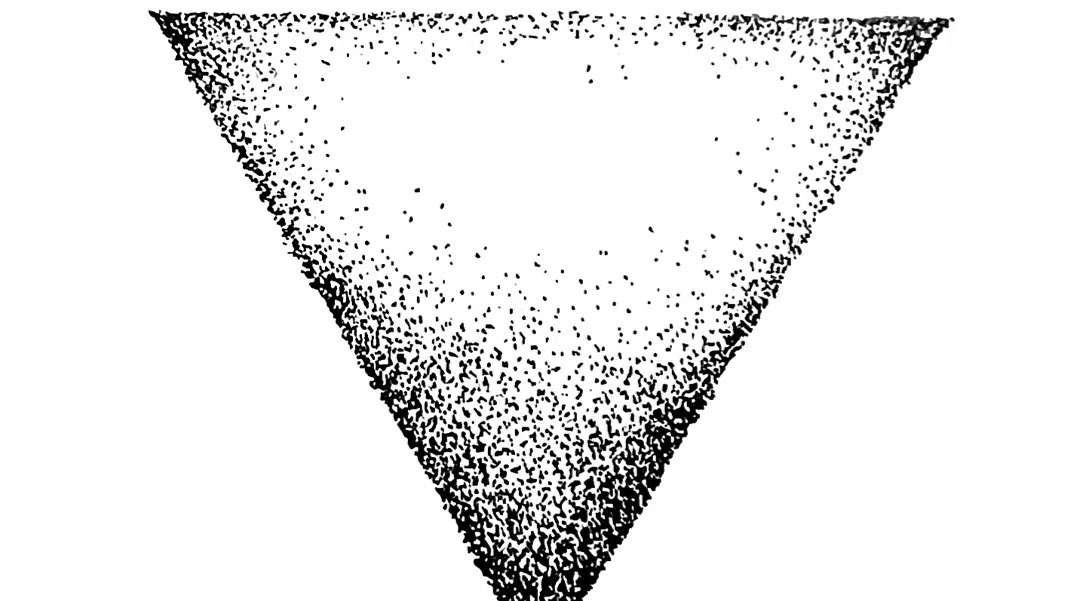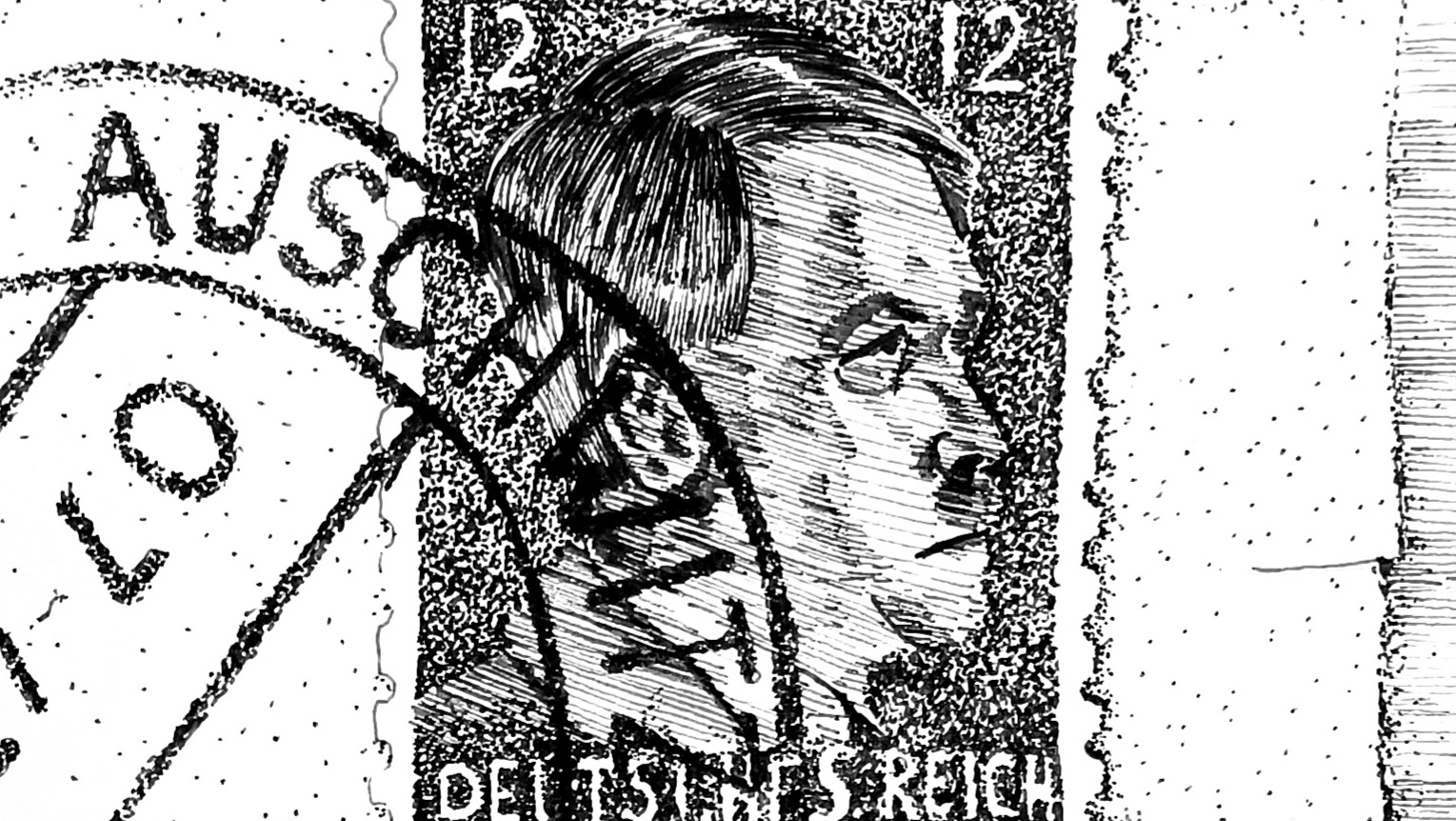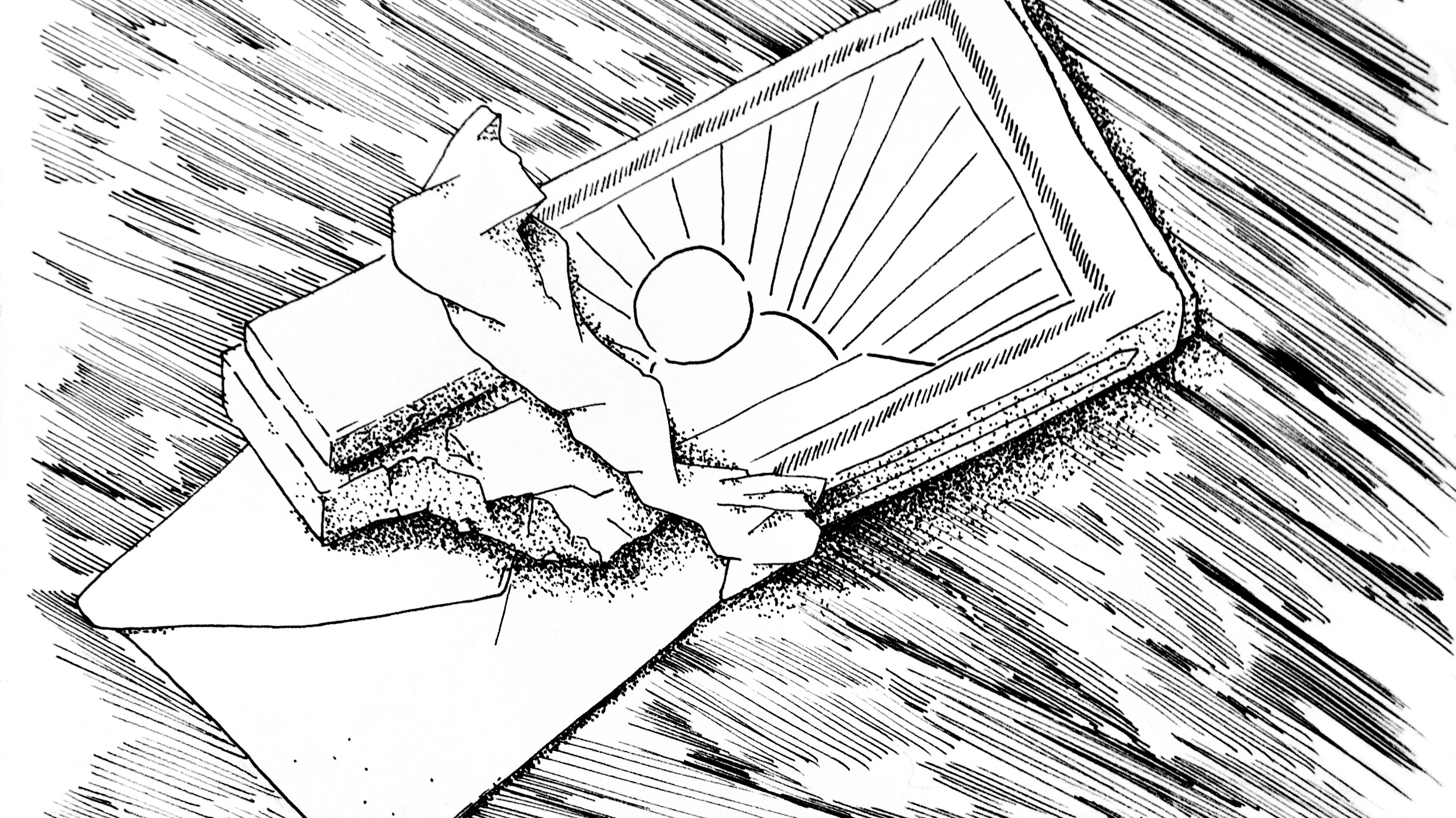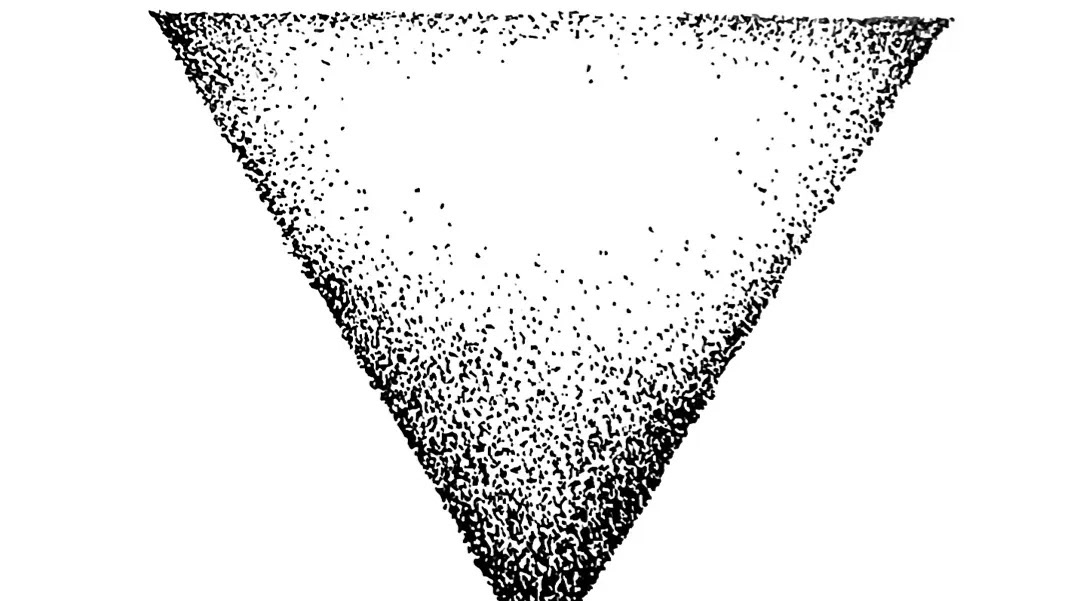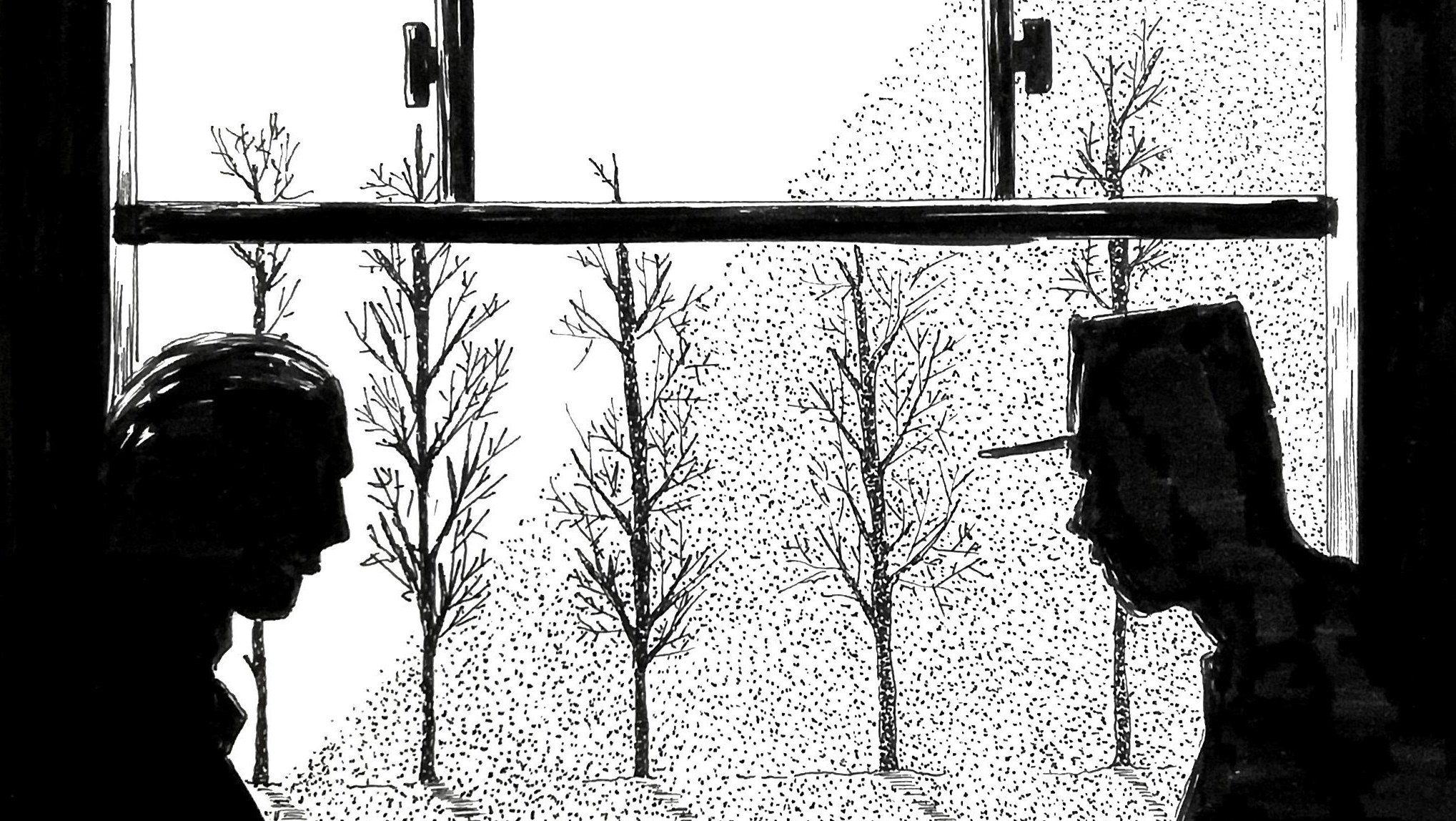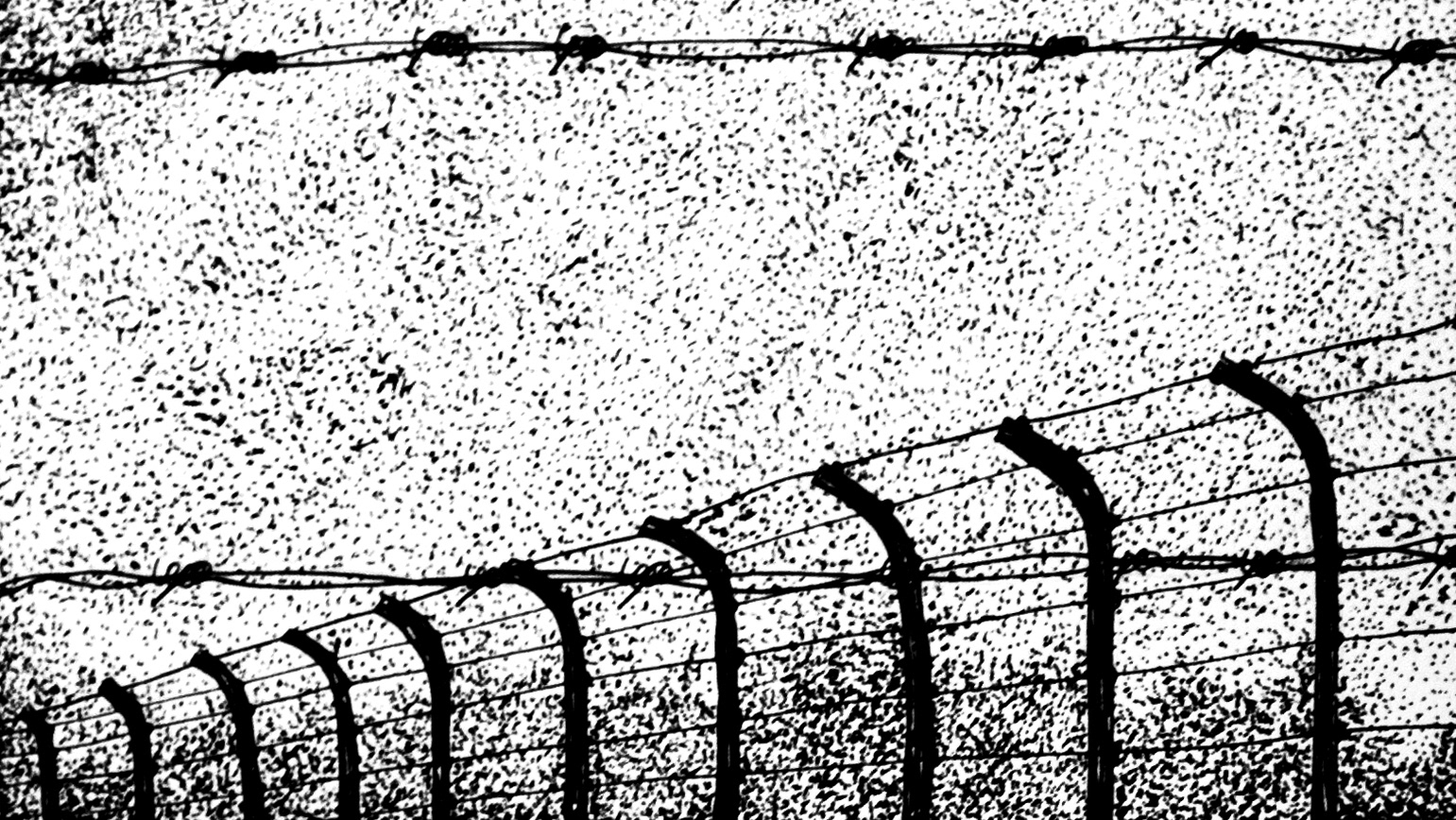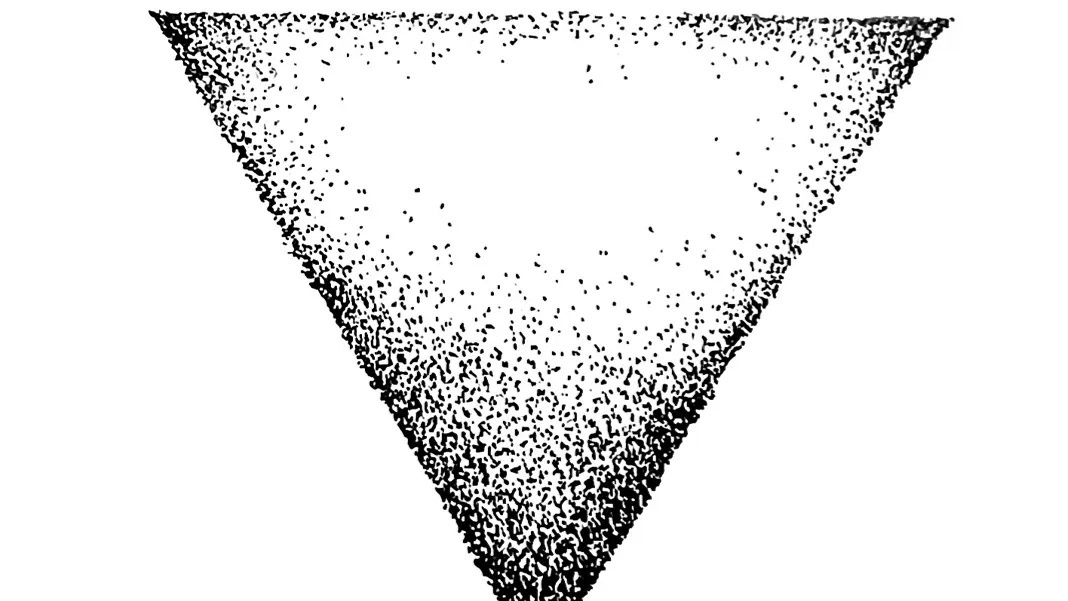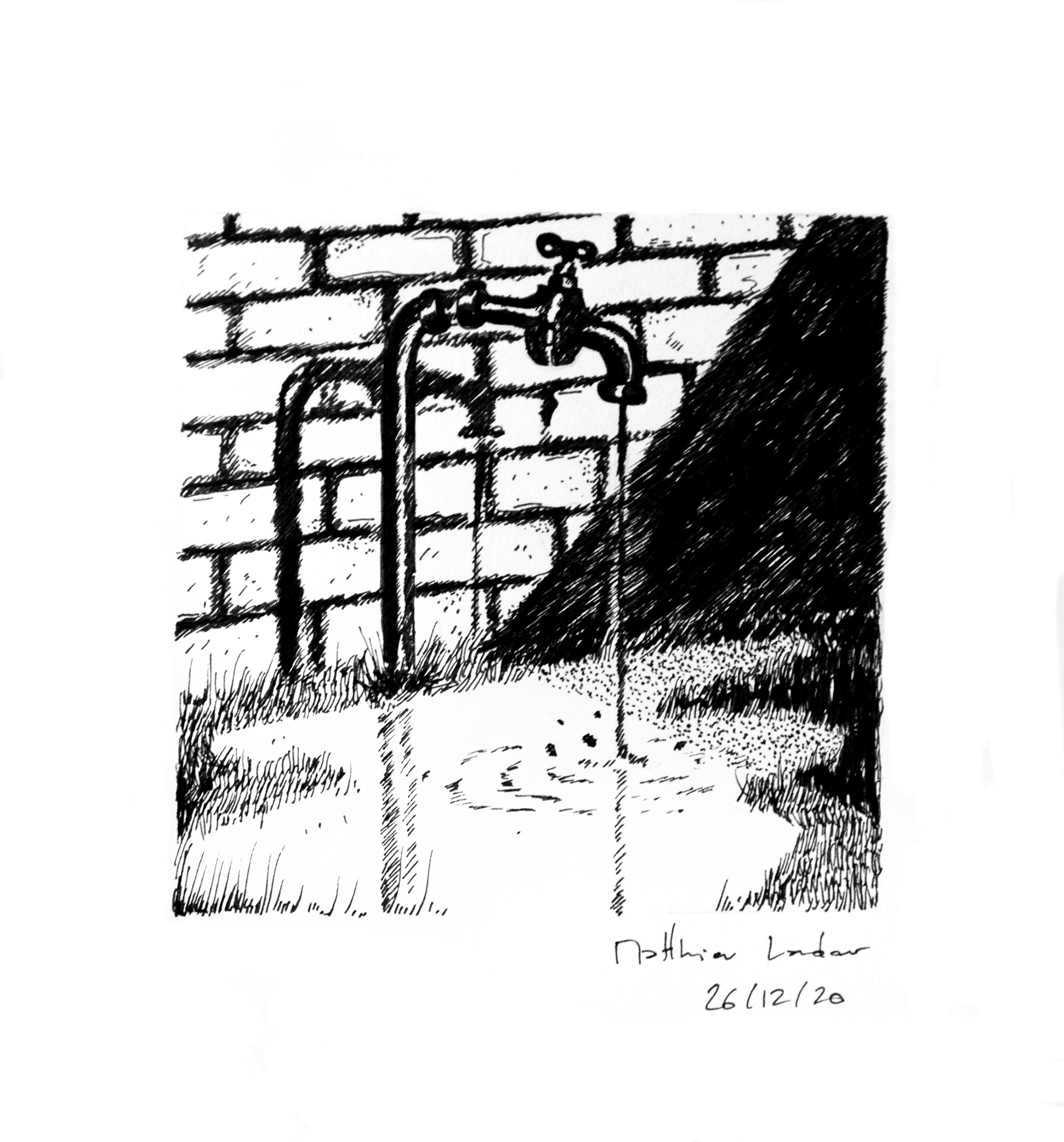
the faucet
Today is the 13th of February 1943, and the 31000 are still quarantined.
The events of the 10th of february, the run as they call it, have been really hard on the morale. So many women disappeared that day, 14 of the 31000 got caught and sent to block 25. Mothers were caught, leaving their daughters alone and distraught, like Helene Brabander or Yvette Guillon. After the run, a kapo ordered someone to come back to the hill and help carry the dead. Cecile Charrua volunteered, hoping to get more informations about the remaining 14.
When Cecile came back, she was a different person, traumatized. There were thousands of women on the hill, thousands to carry and throw into trucks. Most of them were still alive, begging her to bring them into safety. Cecile couldn't, threatened otherwise to join everyone in the trucks if she didn't follow orders. Once full, the trucks left and drove towards the big buildings with those massive cheminees, constantly releasing a dark smoke. Those weren't factories, those were burning places, human burning places. The dark smoke, the air was filled of it, it was filed with people.
This place, whatever it was, it wasn't like Romainville or any other camp. This was a camp of death. Cecile couldn't quite explain what she saw, she couldn't believe it herself. Anyway, the look on her face said enough.
Now they are back in quarantine, no one knows for how long. Every morning and every evening, they must endure those roll calls in the cold. Yet the 31000 are organised, if one is too cold, she goes in the middle of the row of 5, to get warmer. And on a regular basis, discreetly, they swap places to keep moving and alert.
On top of the 31000, Josee tries to keep morale up, she tells the women to keep on exercising, to stay fit, to stay positive. The 31000 always listen to Josee.
Back in 1941, Josee was a nurse in Paris. Resistants, when injured, couldn't go to the hospital, they would be arrested by the police. They needed people like Josee, who treated them discreetly. Caring is one way to resist. .
Josee lended a roneo machine, an old type of photocopier, to another resistant who got caught. It didn't take long to the police to discover that Josee was the owner.
In Romainville, the prison where most of the 31000 stayed before their transfer to Royallieu and Birkenau, Josee was amongst the first to arrive. She became a natural leader, the women trusted her. Even the german guards, when accompanying her, looked like she was their captain.
Back in Birkenau, the biggest issue is water. If they want to shower, they need water, and there is no water in their block. A faucet can be reached, yet a german kapo stands in front of it. You would imagine it is a straightforward task, you reach the place, tell the guard you need water, the guard lets you use it, and you come back to your block.
It isn't straightforward, not at all. The faucet is for thousands of women, one single faucet. As Josee comes to get water, the kapo refuses. Josee loses patience, the kapo slaps her. Josee replies with her fist, the kapo has a baton, Josee loses the fight, she is heavily injured, she comes back to her block without water, only bruises.
Even if they don't go to any kommando during the day, the first days of quarantine aren't easy. The lack of water brings hygiene issues, and the first cases of dysentery. The first 31000 die, mostly the oldest women. Louise Magadur becomes the oldest of the 31000.
Josee gets better, she wants to keep on leading the group, she wants to help. She decides to go back to the kapo to get water. But the kapo remembers Josee, she wants her revenge.
At first, she lets her get closer to the faucet, so Josee starts pouring cold water inside her tin. Josee can't see the kapo leaning behind her, she hits her in the back, Josee falls on a puddle below the faucet. The kapo keeps on hitting until she's had enough, Josee is covered in bruises, also in cold water.
The kapo hopes Josee would catch pneumonia, this is her revenge. Josee does catch it, it gets bad incredibly quickly.
The quarantine ends, the 31000 are not leaving Birkenau, they are not going to another camp as they supposed. They join another group of women inside block 26. There is so little space, the women need to sleep in groups of 8 on bunks that have been built for 3. When Marie Claude Vaillant Couturier asks about the lack of space, one polish woman simply answers that it won't be a problem for long, there will be more space very soon. The 31000 don't quite understand what this means, yet.
Josee didn't join the 31000, her pneumonia kept on worsening, she joined the revier, never to be seen again.
This place, whatever it's name is, this place is death.
Notes
Thank you for listening to this episode of 31000/45000, the story of 2 trains of french members of the resistance. My name is Matthieu Landour Engel. .
This episode was about Josee Maria Alonso and the water issue in Birkenau.
First, I want to give you a few more informations about the quarantine. The reasons for the 31000 quarantine is a little unclear. Normally, prisoners are in quarantine because they will be transferred someplace else pr freed, so it is possible that, in the case od the 31000, the administration didn't know what to do with them or intended to transfer them. It is possible as the 31000 are the only women members of the resistance deported to Auschwitz, their uniqueness could have been a mistake. But no information has been found regarding the reasons of the quarantine, so we will never know. The quarantine ended without any explanations and the women were sent in different kommandos.
The water in Birkenau was a massive issue. In 1943, there was one bath house for ezch part of the camp, which means only one, maybe 2 access to water for the women part of the camp, which is roughly 1 or 2 faucets for 10000 women. This is simply insane to imagine.
Birkenau was a place incredibly poorly planned, buildings were built without a proper sanitation system, canalisation systems were conceived later. This can only make sense if you think of this place as an extermination camp. Prisoners were here to sleep before they were killed, their well being, and by this I mean basic human rights, was not a parameter, the prisoners were expendable, only used as labour for a limited amount of time. Thinking about sanitaries for the prisoners was therefore secondary, as was equipment for the infirmaries.
Josee Maria Alonso was beaten by a guard or kapo who then threw cold water on her, so she would get sick. It was a cruel act, effective, as Josee died in a couple of days. Josee was a well known leader among the 31000, with an iron will, but she was unlucky. The will to survive is unfortunately not enough to survive in such a place, nor is a sense of community you also need a lot of luck.
I have been trying to find Maria Alonso’s relatives, unfortunately, my research was unsuccessful. If by any chance, you know of someone related to her please let me know, I would be very pleased to get in touch and make sure the text I wrote doesn’t contain any errors.
My sources for this story are the book le convoi du 24 janvier by Charlotte Delbo, A train in winter by Caroline Moorehead. My sources also are red triangles in Auschwitz, by Claudine Cardon Hamet, the website deportes-politiques-auschwitz.fr, memoire vive and the foundation for the memory of deportation website and the fantastic website auschwitz.org .
Thank you very much for listening, the next episode will be about Louise Lavigne Amand and the women kommandos in Birkenau.
TRADUCTION FRANCAISE
Aujourd'hui, le 13 février 1943, les 31000 sont toujours en quarantaine.
Les événements du 10 février, qu’elles appellent La course, ont été terribles pour le moral du groupe. Beaucoup de femmes sont mortes ce jour, 14 des 31000 ont été arrêtées et envoyées au block 25. Des mères ont été arrachées à leurs filles, comme Hélène Brabander ou Yvette Guillon.
Après la course, un kapo est entré dans le block des 31000 et a ordonné une volontaire pour revenir sur la colline et d’aider à transporter les femmes restées là-bas.. Cécile Charrua s’est portée volontaire, en espérant en savoir plus sur les 14 manquantes.
Quand Cécile est revenue, elle était changée, traumatisée. Il y avait tant de femmes sur la colline, toujours là, des centaines, peut-être un millier. Elles étaient transportées, une à une, et jetées dans des camions, beaucoup étaient encore vivantes, juste incapables de se relever, suppliant qu’on les ramène à l'intérieur plutôt que dans les camions. Cécile ne pouvait rien faire pour elles, elle était forcée de suivre les ordres donnés. une fois pleins, les camions retournaient dans le camp, en direction de bâtiments plus à l'écart dont les cheminées crachaient une fumée noire, parfois même des petites flammes. Cette fumée se dissipait éventuellement, mais elle remplissait l’air. L’air se remplissait de femmes.
Cet endroit, ce camp, ça n'avait rien à voir avec Romainville ou Royallieu. C'était un camp de mort. Cecile ne pouvait pas décrire ce qu’elle venait de voir, elle ne pouvait pas y croire elle-même. Son visage suffisait aux 31000, son visage en disait déjà beaucoup.
Les 31000 sont maintenant de retour en quarantaine, mais elles ne savent pas pour encore combien de temps. Chaque matin, chaque soir, elles doivent endurer l’appel dans le froid, mais les 31000 sont toujours très organisées. Si l’une d'entre elles a trop froid, elle se déplace rapidement au centre d'une rangée de 5, pour se réchauffer un peu. Et régulièrement, les femmes changent de place pour garder leur concentration.
Josée est toujours là, elle remonte le moral de toutes les femmes, leur dit de rester actives, optimistes. Les 31000 écoutent Josée, elles lui font confiance.
Plus tôt, en 1941, Josée était infirmière à Paris. Les membres de la résistance, s’ils étaient blessés, ne pouvaient pas se rendre à l'hôpital sans prendre le risque de se faire arrêter par les autorités. Mais ils pouvaient compter sur Josée, elle était discrète. Guérir est une façon de résister.
Josée participait aussi en prêtant une roneotype ou roneo, une machine à dupliquer des documents par procédé d’alcool à un réseau de résistance. Mais un résistant était appréhendé, il n’avait pas fallu longtemps aux autorités pour remonter à Josée.
A Romainville, le fort ou la plupart des 31000 étaient restées avant leur transfert à Royallieu et Birkenau, Josée était arrivée parmi les premières. Elle devenait une figure d'autorité naturellement, elle inspirait confiance. Même lorsque les gardes allemands accompagnaient Josée d’un lieu à l’autre, Josée donnait l’impression qu’ils étaient sous ses ordres.
De retour à Birkenau, l’eau est un problème, il n’y en a pas. Leur block n’a pas d’eau, ni pour se laver, ni pour se désaltérer. Un robinet est disponible, plus loin, que plusieurs blocks se partagent, mais une kapo allemande le garde. En principe, ce problème pourrait se résoudre aisément, il suffirait d’aller voir la kapo, lui demander d’utiliser le robinet, remplir un seau, puis retourner au block.
Mais ça n’a rien d'aisé, au contraire. Le robinet est partagé par des milliers de femmes, un simple robinet, et la kapo est terrible. Lorsque Josée vient chercher de l’eau, la kapo refuse sans donner d’explication. Josée exige une réponse, la kapo la frappe. Josée se défend, mais la kapo a un bâton. Josée perd le combat, elle est blessée, elle retourne au block de quarantaine, avec peine, sans eau.
L’eau est un problème qui ne fait que s’aggraver. La quarantaine évite aux 31000 les kommandos difficiles, mais le quotidien reste difficile. Sans eau, la soif rend faible. Sans eau, l'hygiène manque, la toilette est difficile, la dysenterie apparaît chez les 31000. Les premières femmes meurent dans leur block, les plus isolées d’abord, puis les plus âgées. Louise Magadur devient la femme la plus âgée.
Quelques jours s'écoulent, Josée reprend des forces, elle se lève et retourne au robinet. Josée veut aider, elle est aussi têtue, elle a bien l’intention de récupérer de l’eau. Mais la kapo se souvient de Josée, celle qui s’est défendue, et elle a bien l’intention de se venger.
Lorsque Josée arrive, la kapo la laisse s’approcher, elle semble accepter, elle paraît raisonnable. Josée remplit son récipient d’eau très froide, elle fait dos à la kapo, elle ne la voit pas s’approcher d’elle. La kapo frappe Josée dans le dos, la douleur est immédiate, Josée tombe dans le sol boueux sous le robinet, boueux et glacial. La kapo est sadique, elle frappe Josée encore et encore, puis l’arrose d’eau, encore et encore. Elle voulait de l’eau, la kapo l'éclabousse et la roue, jusqu'à ce que son bras la fatigue et qu’elle la laisse.
Josée est couverte de blessures, elle est couverte d'eau. La revanche de la kapo est là, elle espère que Josée va attraper une pneumonie, car on ne survit pas d’une pneumonie ici.
Josée l’attrape, son état s’aggrave très vite.
La quarantaine s'achève, les 31000 ne quittent pas Birkenau, elles ne vont nulle part, pas dans un autre camp comme elles le pensaient, elles restent. Elles sont emmenées dans un nouveau bâtiment, le block 26. Le lieu est déjà bien rempli, les femmes doivent se serrer à 8 dans des couches de bois conçues pour 3. Marie-Claude Vaillant-Couturier s’enquiert auprès d’une autre prisonnière du même block à propos du manque d’espace, la prisonnière lui répond simplement que ce problème n’en sera plus un sous peu, de l’espace se libérera très vite. Les 31000 ont des difficultés à comprendre pourquoi, pas encore.
Josée ne rejoint pas les 31000 dans le block 26. Sa pneumonie s'est aggravée, elle est partie au revier.
Personne ne la reverra.
Quel que soit le vrai nom de ce camp, ce lieu est la mort.
notes
Thank you for listening to this episode of 31000/45000, the story of 2 trains of french members of the resistance. My name is Matthieu Landour Engel. .
This episode was about Josee Maria Alonso and the water issue in Birkenau.
First, I want to give you a few more informations about the quarantine. The reasons for the 31000 quarantine is a little unclear. Normally, prisoners are in quarantine because they will be transferred someplace else pr freed, so it is possible that, in the case od the 31000, the administration didn't know what to do with them or intended to transfer them. It is possible as the 31000 are the only women members of the resistance deported to Auschwitz, their uniqueness could have been a mistake. But no information has been found regarding the reasons of the quarantine, so we will never know. The quarantine ended without any explanations and the women were sent in different kommandos.
The water in Birkenau was a massive issue. In 1943, there was one bath house for ezch part of the camp, which means only one, maybe 2 access to water for the women part of the camp, which is roughly 1 or 2 faucets for 10000 women. This is simply insane to imagine.
Birkenau was a place incredibly poorly planned, buildings were built without a proper sanitation system, canalisation systems were conceived later. This can only make sense if you think of this place as an extermination camp. Prisoners were here to sleep before they were killed, their well being, and by this I mean basic human rights, was not a parameter, the prisoners were expendable, only used as labour for a limited amount of time. Thinking about sanitaries for the prisoners was therefore secondary, as was equipment for the infirmaries.
Josee Maria Alonso was beaten by a guard or kapo who then threw cold water on her, so she would get sick. It was a cruel act, effective, as Josee died in a couple of days. Josee was a well known leader among the 31000, with an iron will, but she was unlucky. The will to survive is unfortunately not enough to survive in such a place, nor is a sense of community you also need a lot of luck.
My sources for this story are the book le convoi du 24 janvier by Charlotte Delbo, A train in winter by Caroline Moorehead. My sources also are red triangles in Auschwitz, by Claudine Cardon Hamet, the website deportes-politiques-auschwitz.fr, memoire vive and the foundation for the memory of deportation website and the fantastic website auschwitz.org .
Thank you very much for listening, the next episode will be about Louise Lavigne Amand and the women kommandos in Birkenau.
